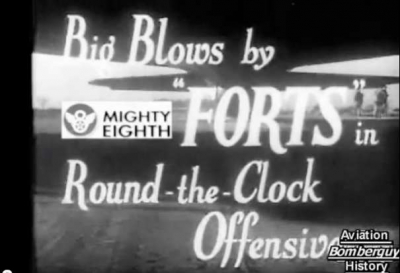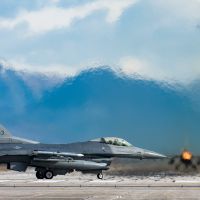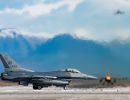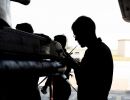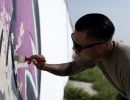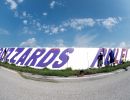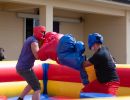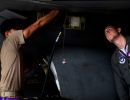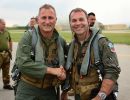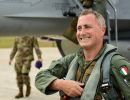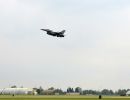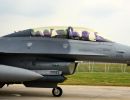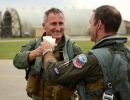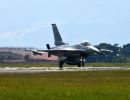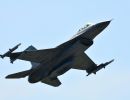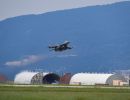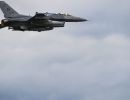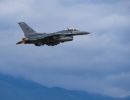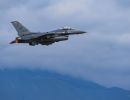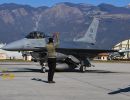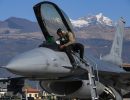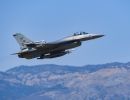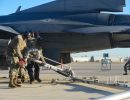This is a 3 part video series honoring the 8th Air Force.
Total Runtime: 29:30
Consequently, it was a USAAF outfit that was to be the first to bring the Thunderbolt into service. The 56th Fighter Group based near New York City was the first outfit to receive the P-47B, and began to reequip with the type in June-July 1942. They were entrusted with the task of shaking the bugs out of their new mounts. Since their base was fairly close to the Farmingdale plant, the Group could easily call upon Republic engineers to solve problems as they were encountered. Tests and operational training went slowly, accompanied by the loss of 13 pilots and 41 aircraft in accidents. As more Thunderbolts became available, P-47Bs were subsequently issued to the 348th and 355th Groups.
The first P-47Cs arrived in England as early as December 20, 1942, and equipped the 4th Fighter Group which somewhat reluctantly traded in their Spitfires for the type. P-47Cs also reequipped the 82nd, 83rd, and 84th Squadrons of the 78th Fighter Group. P-47Cs were also supplied to the 56th Fighter Group which left their P-47Bs back home in the States when they transferred to England. Engine and radio problems caused some delays, but the first operational sorties began on March 10, 1943, and consisted of high-altitude escort duties and fighter sweeps. The first encounter with German fighters came on April 15, when the P-47Cs of the 335th Squadron shot down three German fighters for a loss of three of its own.
The high-altitude performance of the P-47C was far superior to anything the Luftwaffe could put up against it, but at low and medium altitudes the P-47C could not match the maneuverability and climb rates of its opponents. However, the P-47C could out-dive just about anything in the sky, and many a Thunderbolt saved itself from a sticky situation by using its superior diving performance to break off combat at will when it proved necessary to do so. According to Robert S. Johnson of the 56th Fighter Group, the Thunderbolt could outroll any other fighter. The Thunderbolt's eight 0.50-inch machine guns provided sufficient firepower to destroy any enemy plane which had the misfortune to come within its sights.
The P-47Cs of the 56th, 4th and 78th Groups of the 8th Air Force were intended as bomber escorts, but were ineffectual until fitted with auxiliary fuel tanks to lengthen their range at the end of July 1943. These three groups were joined later in 1943 by seven new groups flying P-47Ds-- the 352nd, 353rd, 355th, 356th, 358th, 359th, and 361st Fighter Groups. P-47s flew escort missions until the end of 1943, when they began to be replaced by longer-range P-38 Lightnings and P-51 Mustangs which were better suited for the long-range escort role.
Once the Mustang began to take over the long-range escort role, the Thunderbolt was largely diverted into the ground attack role, where the P-47 was to gain its reputation. After seeing action in North Africa, the Ninth Air Force was transferred to England as part of the build-up for D-Day. The 362nd and 365th Fighter Groups of the Ninth Air Force were the first to receive P-47Ds. They were joined by the 358th Group from the Eighth Air Force. In May 1944, these three groups were joined by many other units flying P-47Ds in providing air cover for the impending landings in France-- the 36th, 50th, 366th, 367th,, 368th, 371st, 373rd, 405th, 406th, 48th, 354th, and 404th Fighter Groups. These units provided much effective ground support for the advancing Allied forces as they penetrated further and further into France.
The Thunderbolt was extremely effective in eliminating enemy forces in the face of the Allied advance. Even though the P-51 Mustang had largely replaced the Thunderbolt in the long-range, high-altitude bomber escort role in the ETO by the end of 1944, the P-47D continued to rack up an impressive number of air-to-air kills against the Luftwaffe, while it beat up the Wehrmacht on the ground in its destructive bombing and strafing career.
Many pilots became aces while flying the Thunderbolt. Outstanding among these was Lt-Col. Francis S. Gabreski (31 kills, the highest-scoring Thunderbolt pilot), Capt. Robert S. Johnson (28 kills) and Col. Hubert Zemke (20 kills). The highest-scoring USAAF Group in the ETO was the 56th Fighter Group, which destroyed 1006 German aircraft against a loss of 128 Thunderbolts--a ratio of nearly eight to one.
Note: 'Spokane Chief' shown in the opening and ending sequences is identified as P-47C-5-RE WZ-Z (41-6630) 84th FS, 78th FG, 8th AF, USAAF

